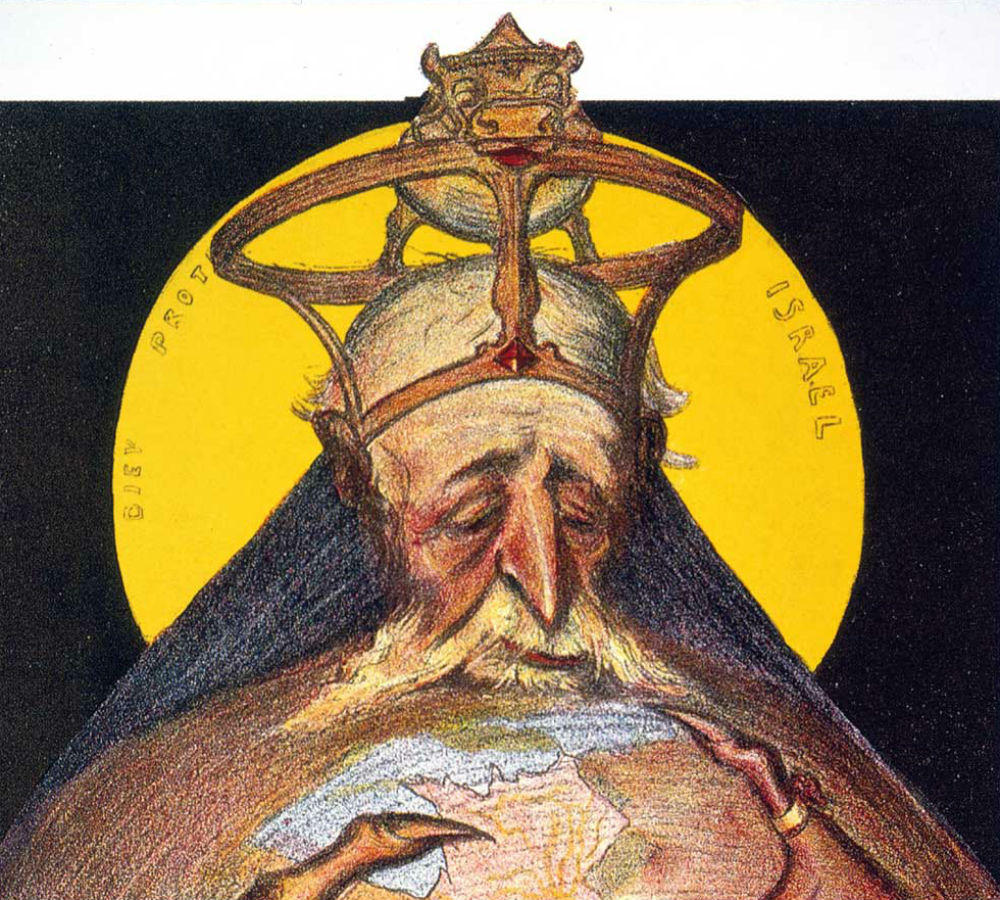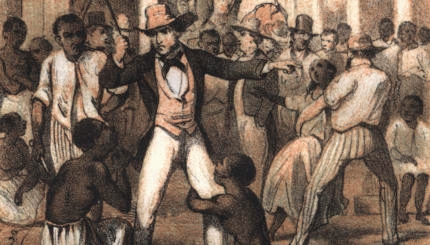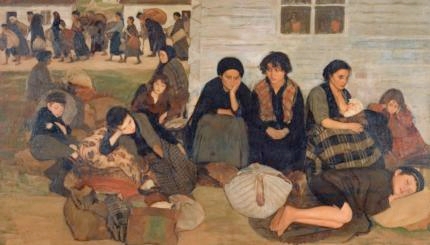Anti-Semitic attitudes have often focused on the Jewish body as well as on Jews’ beliefs or behavior.
While scientific data show that the observable physical characteristics of Jews are not significantly different from the populations in which they have lived in recent centuries, observed data which don’t accord with expectations have often been ignored and a stereotypical Jewish profile has been assembled in regard to eye and hair color and nasal profile. For example, far more European Jews have blond hair or blue eyes than do Jews from Muslim lands.
Despite the claims of 19th and 20th century pseudo-science, the “Jewish nose” is not a genuine characteristic. Harry L. Shapiro has pointed out (in the Encyclopedia Judaica entry “Anthropology, Physical”) that while the “convex profile with a depressed nasal tip is not infrequent among Jews, this is not surprising since the same nasal character is common enough in the general region from which they originate, not to mention that it also occurs in non-Jewish European people.”
The outstanding physical characteristic that, to a large extent has distinguished the Jews–at least the males among them–is circumcision. The removal of the foreskin was a practice nearly as repugnant to the ancient Romans as castration. The Emperor Hadrian (117-138 C.E.) outlawed both as they were seen as unnatural offenses against the Greek idea of natural beauty of the human body. (E. Mary Smallwood, The Jews under Roman Rule from Pompey to Diocletian [Leiden: Brill, 1976], 429.)

Help us keep Jewish knowledge accessible to millions of people around the world.
Your donation to My Jewish Learning fuels endless journeys of Jewish discovery. With your help, My Jewish Learning can continue to provide nonstop opportunities for learning, connection and growth.
Jewish responses to this negative attitude led some Jews to forego circumcision, and others to undergo the surgical procedure known as epispasm. Rabbinic literature calls one whose foreskin has been artificially restored a mashukh, “pulled” forward. (See, for example, Babylonian Talmud, Yevamot 72a.) The first century C.E. philosopher Philo of Alexandria defended the practice and cited its advantages. In the First Book of Maccabees we read of Jews who “left their sons uncircumcised” (1:48) or who “removed the marks of circumcision” (1:15). One can only wonder if the psychological impetus to undergo such surgery can be compared to the modern phenomenon of the rhinoplasty (the “nose job”).
The early Christian church abandoned circumcision. Paul, cited in Galatians 6:15, claimed that circumcision was an irrelevant practice. With the dominance of Rome by the Christian Church (from the fourth century C.E.), which had abandoned circumcision, the negative associations with the practice were sealed.
A widespread medieval negative image of the Jew was based upon a misinterpretation of the Hebrew Bible. Moses was often depicted with two horns on his head as a result of the Latin mis-rendering of the verb “sent forth beams” (karan) in Exodus 34:35 as “grew horns.” (A horn is a keren.) This image, which was widely portrayed in art of the Middle Ages by artists including Michelangelo and Donatello in Italy, led to the widespread notion that all Jews had devilish horns.
The Nazis seized upon the negative Jewish body image and used caricatures and other forms of propaganda to present the Jews as sub-human or as disfigured humans. The Nazi weekly Der Sturmer was famous for disseminating these images.
In an ironic way, the Zionist movement came to see the Jews’ bodies as inadequate as well. The emaciated, pale, and weak yeshiva bokhur (Talmud student) came to be seen as the antithesis of the strong sun-bronzed self-reliant image of the “new Jew” who was engaged in the physical rebuilding of the Land of Israel and the Jewish people.
Despite the counter-image of the tsabar (“Sabra”), or native born Israeli, negative images of Jews continue to be common. Even in the 21st century there are places where ignorant people remain under the impression that Jews have horns and countries in which criticism of the practice of circumcision seems to be motivated by underlying anti-Semitic attitudes.




